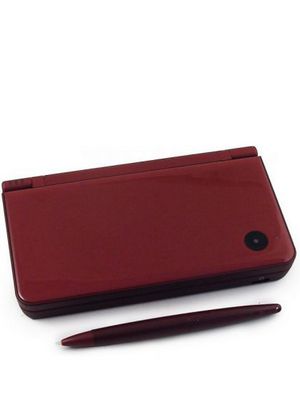The Nintendo DS, or simply DS, is a dual-screen handheld game console developed and released by Nintendo. The device released globally across 2004 and 2005. The DS, short for "Developers' System" or "Dual Screen", introduced distinctive new features to handheld gaming: two LCD screens working in tandem (the bottom one featuring a touchscreen), a built-in microphone, and support for wireless connectivity.] Both screens are encompassed within a clamshell design similar to the Game Boy Advance SP. The Nintendo DS also features the ability for multiple DS consoles to directly interact with each other over Wi-Fi within a short range without the need to connect to an existing wireless network. Alternatively, they could interact online using the now-defunct Nintendo Wi-Fi Connection service. Its main competitor was Sony's PlayStation Portable during the seventh generation of video game consoles. It was likened to the Nintendo 64 from the 1990s, which led to several N64 ports such as Super Mario 64 DS and Diddy Kong Racing DS, among others.
Prior to its release, the Nintendo DS was marketed as an experimental, "third pillar" in Nintendo's console lineup, meant to complement the Game Boy Advance and GameCube. However, backward compatibility with Game Boy Advance titles and strong sales ultimately established it as the successor to the Game Boy series. On March 2, 2006, Nintendo launched the Nintendo DS Lite, a slimmer and lighter redesign of the original Nintendo DS with brighter screens. On November 1, 2008, Nintendo released the Nintendo DSi, another redesign with several hardware improvements and new features. All Nintendo DS models combined have sold 154.02 million units, making it the best selling handheld game console to date, and the second best selling video game console of all time behind Sony's PlayStation 2.The Nintendo DS line was succeeded by the Nintendo 3DS family in 2011, which maintains backward compatibility with nearly all Nintendo DS software.
Wikipedia